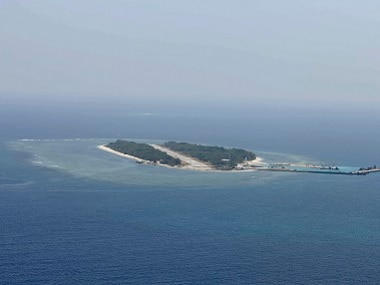Indians are transfixed by the violence in Jammu and Kashmir; there is a fair chance that it is part of the ISI’s pincer movement — cause trouble for India in J&K on the west, in Bangladesh on the east, and with its group of fifth columnists everywhere, especially in the media. The Modi Special, perhaps. There may be some urgency, because Pakistan’s ‘all-weather friend’ and sponsor China is annoyed that India is growing at China-like rates. So they probably got the ISI to ratchet up the violence on command. China has some reason to be unhappy, as things are not all going swimmingly in its favour. There’s much that is gratifying and positive, though: first, the near collapse of Atlanticism as seen in Brexit suggests that the Anglo-American and Euro-American alliances are fraying. Second, the continued helplessness of the Americans in the face of violence in the Middle East, as well as even back in their home territory (eg. Orlando) suggests to China that the American Century is well and truly over. Third, the One Belt, One Road and other Chinese initiatives are progressing even as the American-dominated Bretton Woods regime, such as the IMF and World Bank are regressing. [caption id=“attachment_2734792” align=“alignleft” width=“380”]
 South China Sea. AP.[/caption] The things that should be worrying China are three-fold: first, the problems of the domestic debt and the slowing of the economy; second, the increasing alarm among its neighbors, especially in the South China Sea that shows the smokescreen of ‘peaceful rise’ is not getting much traction; and third, the increasing likelihood of military alliances specifically targeting China and seeking to contain it. Much has been said about China’s debt overhang and also its hangover based on export-led strategies that have created a monstrous overcapacity and thus collapsing prices, for example in photovoltaic cells and steel. Ruchir Sharma of Morgan Stanley, an astute observer of emerging markets, is among those betting that China will suffer badly from its debt problems. The South China Sea is becoming the key battleground in which Chinese military strategists are testing their mettle. It is a major trade artery, with a significant portion of the world trade traversing in it. It is also surrounded by a large number of Asean states, all of whom have territorial claims on it based on various rocks, shoals, reefs and islands, such as the intriguingly named Mischief Reef, Fiery Cross Reef, Scarborough Shoal, the Spratly Islands, and the Paracel Islands. While these small features themselves are not so interesting, the exclusive territorial waters around them are potentially rich in mineral wealth. China has used a textbook example of its tactic of ‘manufacturing history’ to claim almost the entire sea as, in effect, a Chinese lake. They produced some maps in which there is a feature called the “nine-dash” line, which they claim is the maritime boundary. That is literally a set of nine dashes on the map that suggest that almost the entire sea belongs to China. Based on nothing more than this pious myth, they now assert sovereignty. This is much the same as their entirely vacuous claims over Tibet, but there as here, they are betting that their military strength will allow them to turn the fiction into fact.
South China Sea. AP.[/caption] The things that should be worrying China are three-fold: first, the problems of the domestic debt and the slowing of the economy; second, the increasing alarm among its neighbors, especially in the South China Sea that shows the smokescreen of ‘peaceful rise’ is not getting much traction; and third, the increasing likelihood of military alliances specifically targeting China and seeking to contain it. Much has been said about China’s debt overhang and also its hangover based on export-led strategies that have created a monstrous overcapacity and thus collapsing prices, for example in photovoltaic cells and steel. Ruchir Sharma of Morgan Stanley, an astute observer of emerging markets, is among those betting that China will suffer badly from its debt problems. The South China Sea is becoming the key battleground in which Chinese military strategists are testing their mettle. It is a major trade artery, with a significant portion of the world trade traversing in it. It is also surrounded by a large number of Asean states, all of whom have territorial claims on it based on various rocks, shoals, reefs and islands, such as the intriguingly named Mischief Reef, Fiery Cross Reef, Scarborough Shoal, the Spratly Islands, and the Paracel Islands. While these small features themselves are not so interesting, the exclusive territorial waters around them are potentially rich in mineral wealth. China has used a textbook example of its tactic of ‘manufacturing history’ to claim almost the entire sea as, in effect, a Chinese lake. They produced some maps in which there is a feature called the “nine-dash” line, which they claim is the maritime boundary. That is literally a set of nine dashes on the map that suggest that almost the entire sea belongs to China. Based on nothing more than this pious myth, they now assert sovereignty. This is much the same as their entirely vacuous claims over Tibet, but there as here, they are betting that their military strength will allow them to turn the fiction into fact.
Rajeev Srinivasan is a management consultant and columnist, and a fan of art cinema.
)